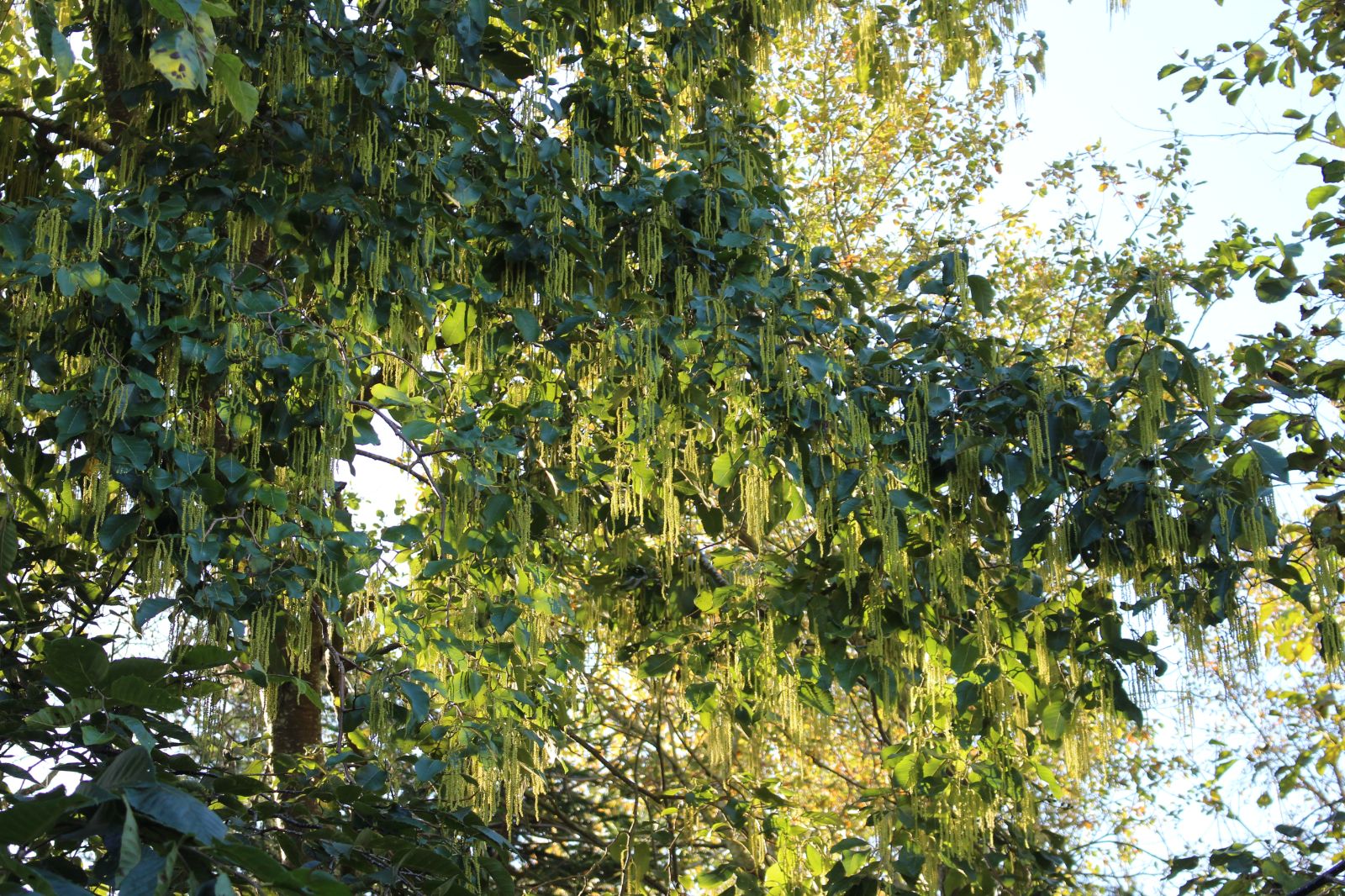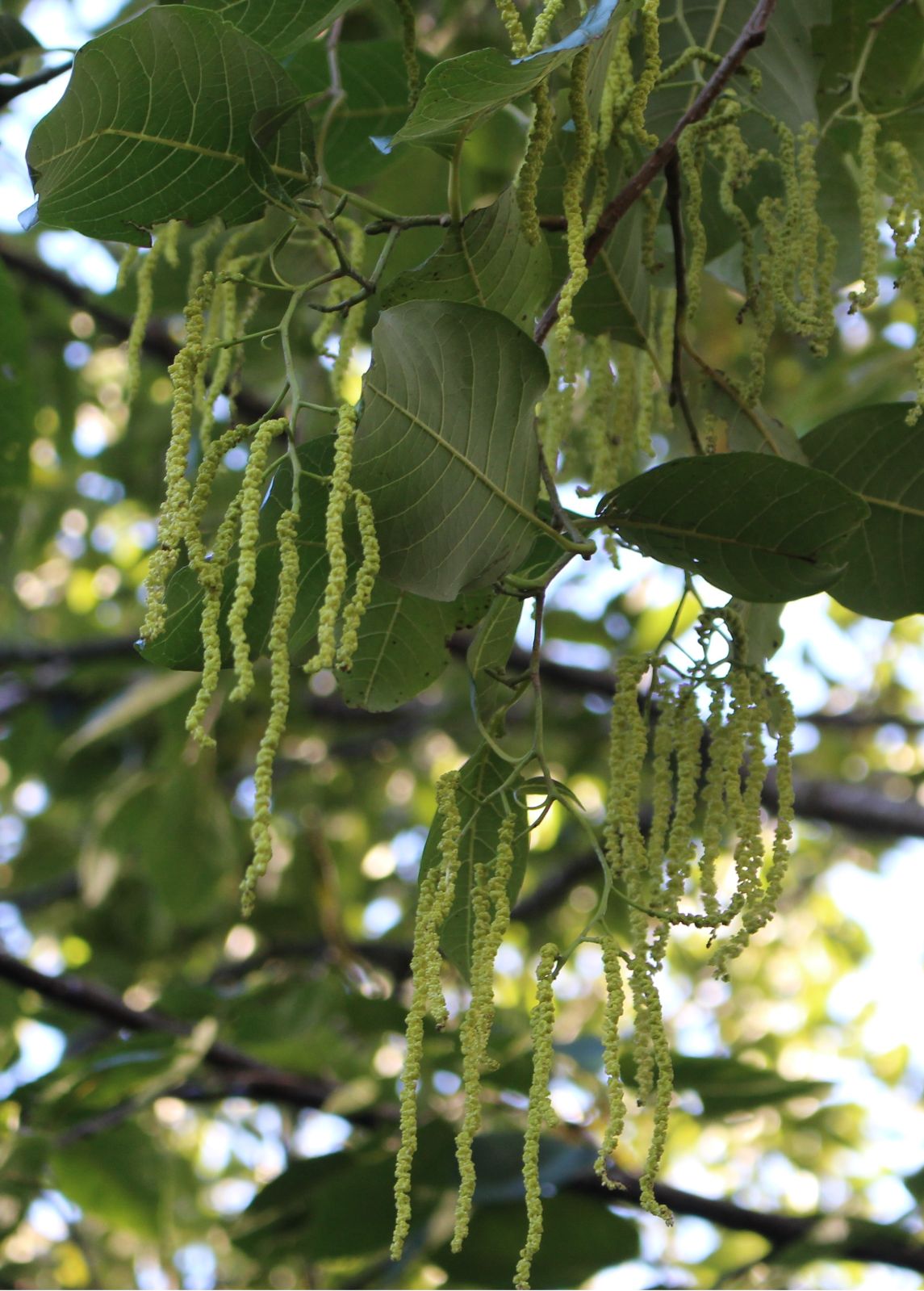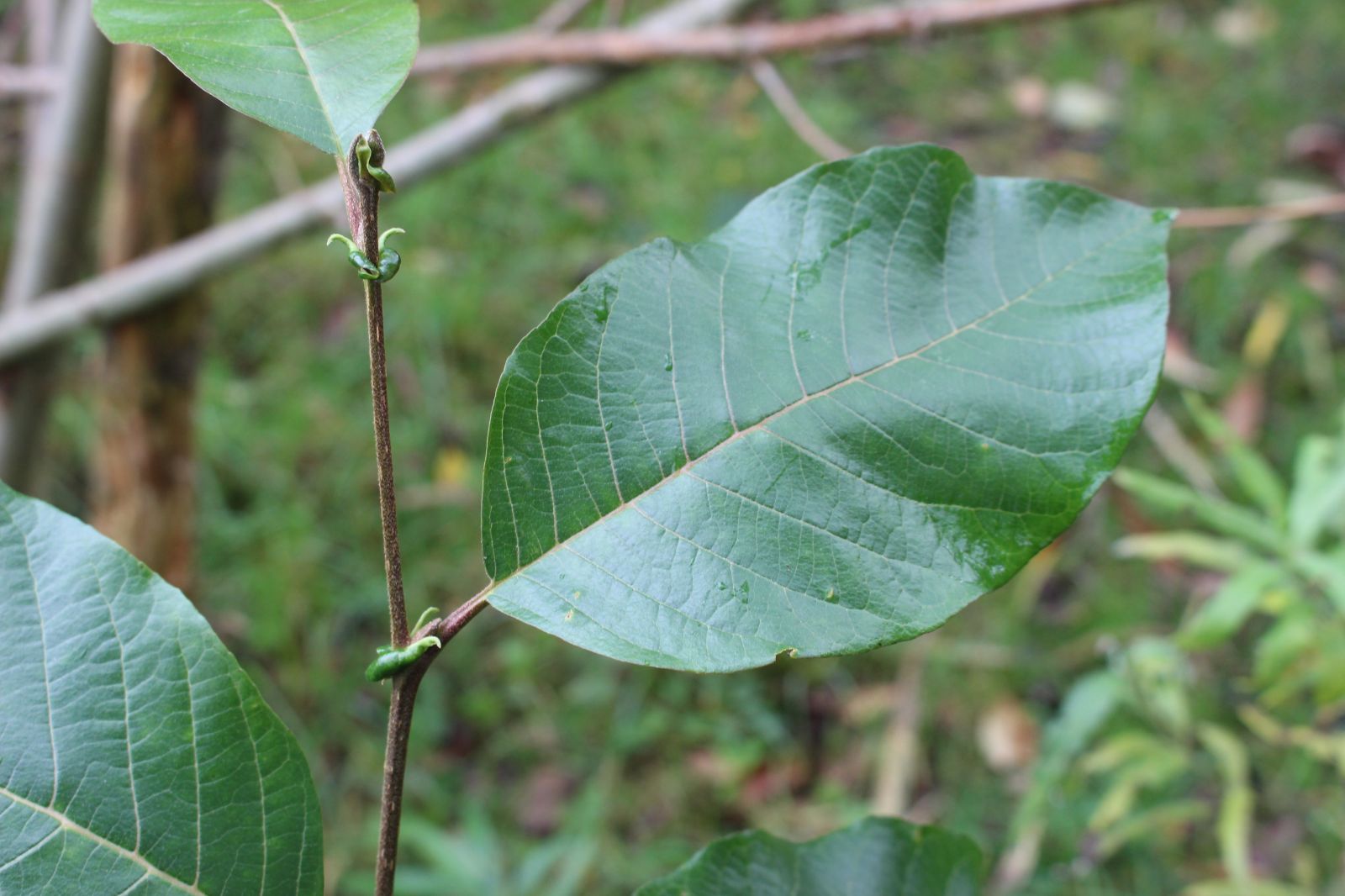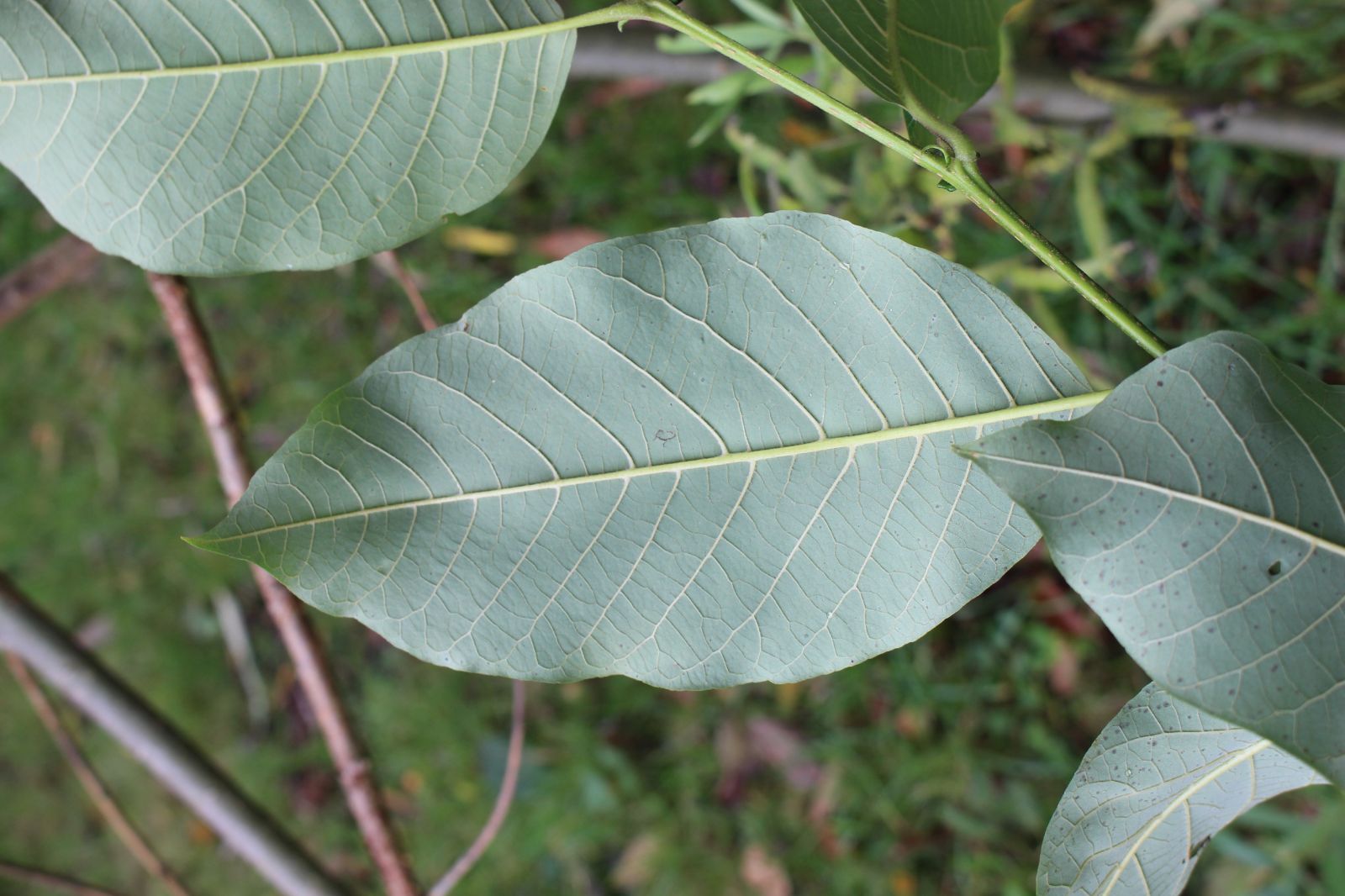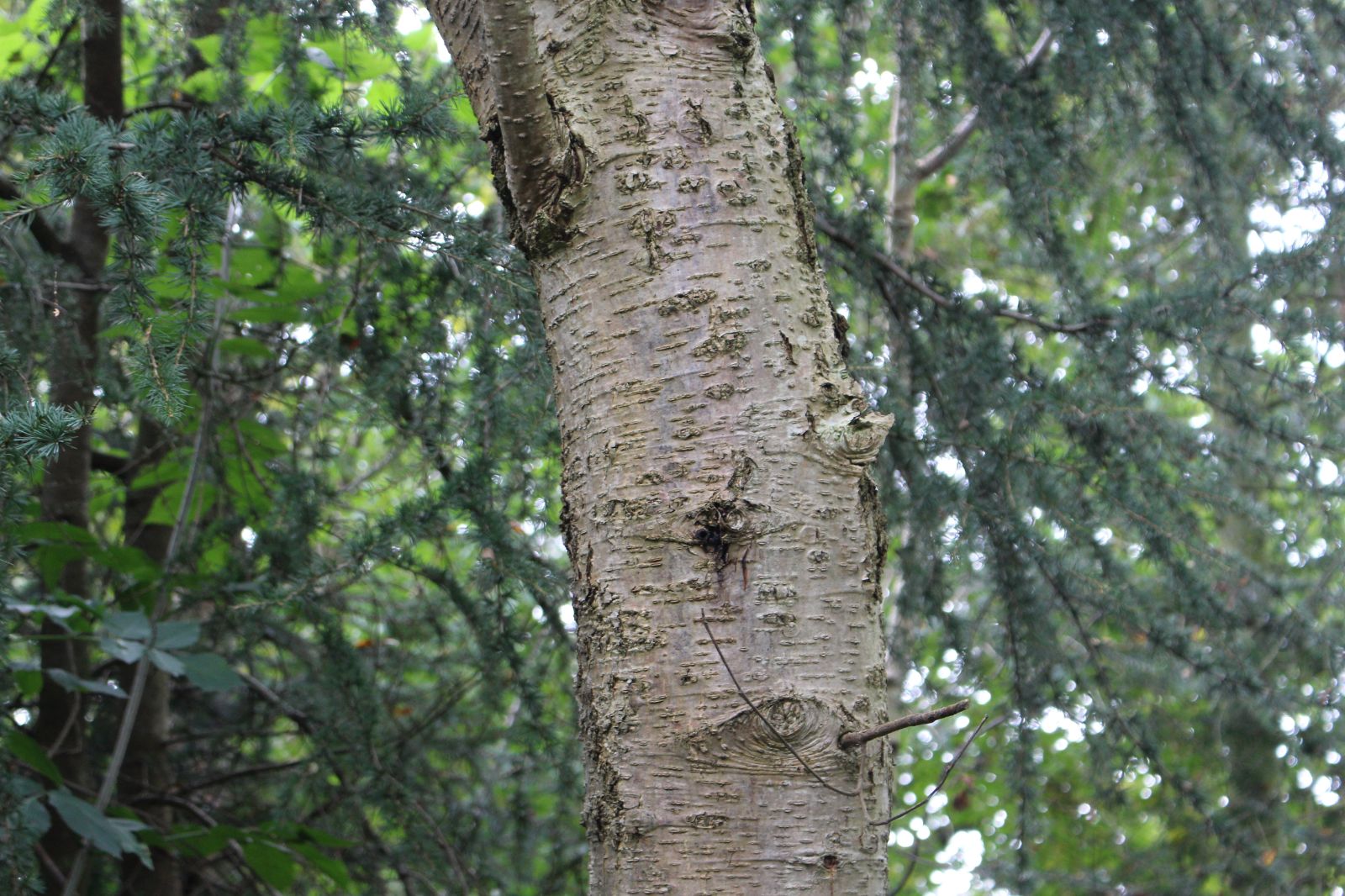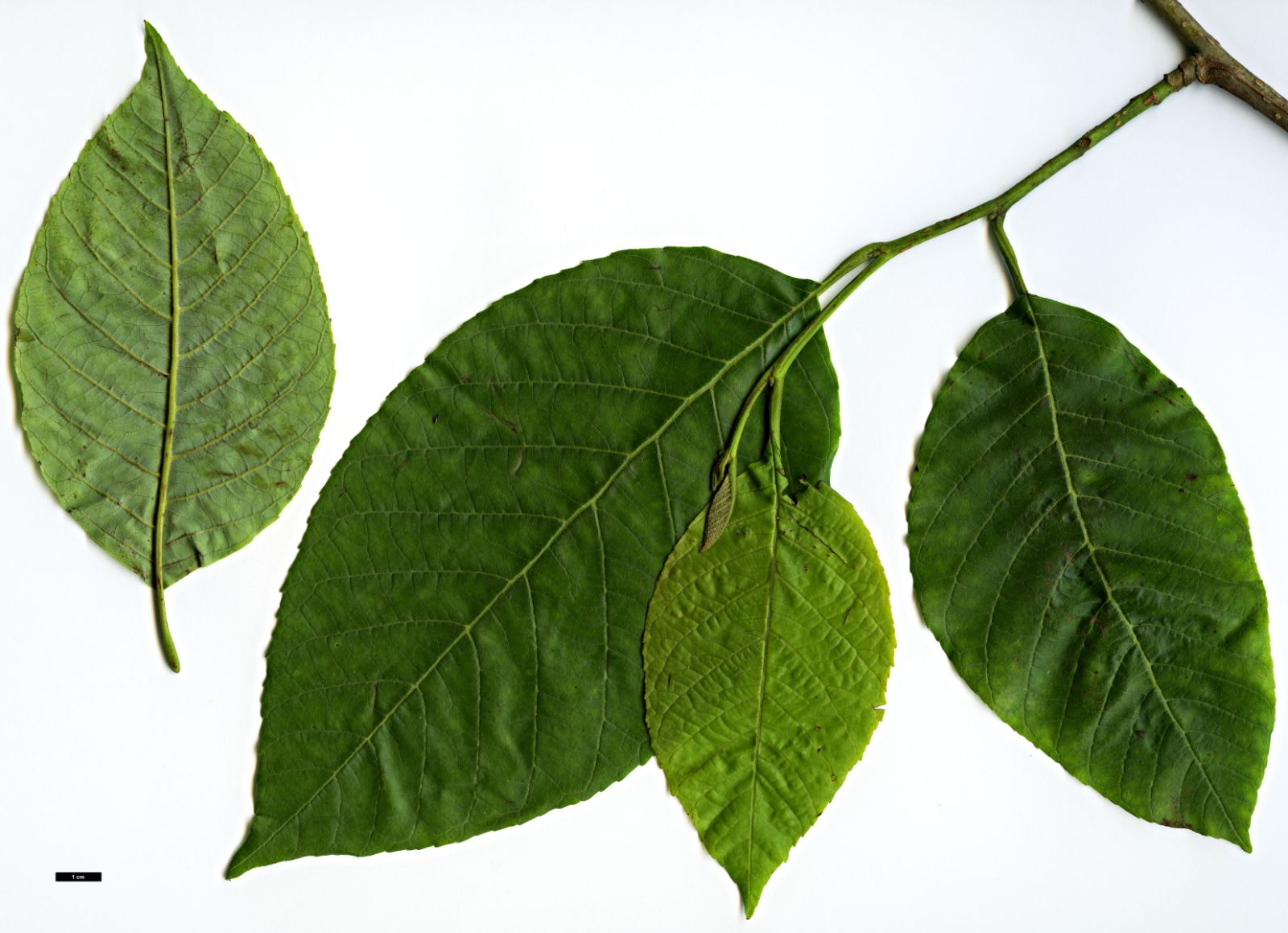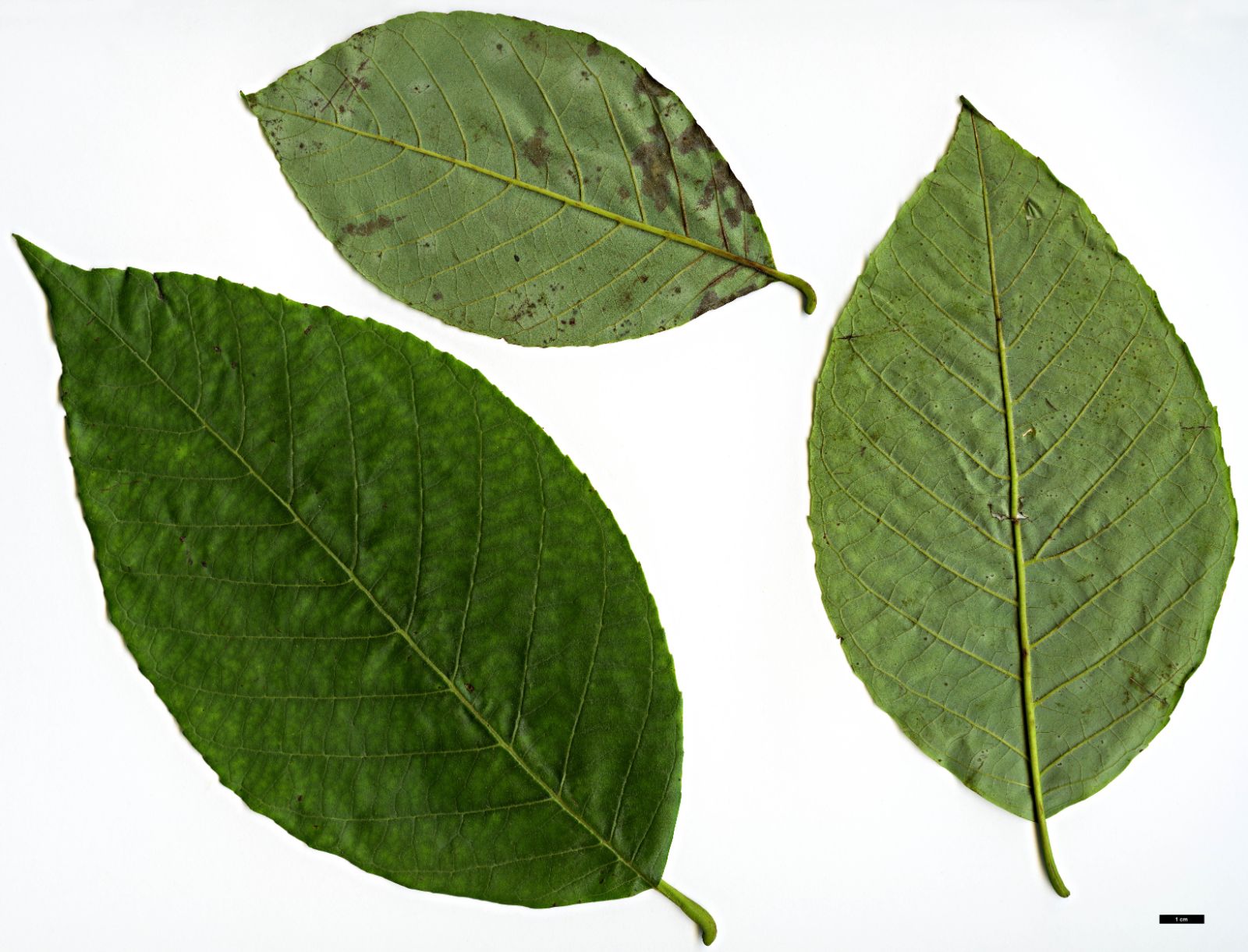Alnus nepalensis
Sponsor
Kindly sponsored by
a member of the International Dendrology Society
Credits
Tim Baxter & Hugh A. McAllister (2024)
Recommended citation
Baxter, T. & McAllister, H.A. (2024), 'Alnus nepalensis' from the website Trees and Shrubs Online (treesandshrubsonline.
Genus
- Alnus
- Subgen. Clethropsis
Common Names
- Nepalese Alder
- Indian Alder
- Maibau
- Nepal Black Cedar
Synonyms
- Alnus boshia Buchanan-Hamilton ex D. Don
- Betula leptophylla Regel
- Betula leptostachya Wall.
- Clethropsis nepalensis (D.Don) Spach
Other taxa in genus
- Alnus acuminata
- Alnus alnobetula
- Alnus betulifolia
- Alnus cordata
- Alnus cremastogyne
- Alnus djavanshirii
- Alnus dolichocarpa
- Alnus × elliptica
- Alnus × fallacina
- Alnus fauriei
- Alnus ferdinandi-coburgii
- Alnus firma
- Alnus formosana
- Alnus glutinosa
- Alnus hirsuta
- Alnus incana
- Alnus inokumae
- Alnus japonica
- Alnus jorullensis
- Alnus lanata
- Alnus lusitanica
- Alnus maritima
- Alnus matsumurae
- Alnus × mayrii
- Alnus nitida
- Alnus oblongifolia
- Alnus orientalis
- Alnus pendula
- Alnus rhombifolia
- Alnus rohlenae
- Alnus rubra
- Alnus serrulata
- Alnus serrulatoides
- Alnus sieboldiana
- Alnus 'Sipkes'
- Alnus × spaethii
- Alnus subcordata
- Alnus trabeculosa
Deciduous or semi-deciduous tree to 30 m high, 60 cm (rarely 2 m) dbh. Bark grey-brown or dark grey, smooth with prominent numerous lenticels. Branchlets green to dark brown, sparsely yellow pubescent when young, glabrescent, ridged and trigonous towards apex. Buds 2–5 × 1–2 mm, with 2 glabrous or glabrescent, ribbed, overlapping scales, stipe 1–2 mm. Stipules 8–12 × 3–5 mm, sagittate, glabrous, persistent. Leaves obovate-lanceolate, obovate-oblong, ovate, or elliptic, 4–16.5 × 2.5–10 cm, base cuneate, often broadly so, rarely subrounded, slightly clasping stem, apex broadly acute to rarely acuminate, margin more or less entire, toothing minutely serrate, adaxially glabrous, abaxially glabrous except villose hairs to sides of veins only, and hairy domatia, blade glossy deep green above, matt, grey-green below, thick and leathery, lateral veins 8–16 on each side of midvein, eucamptodromous. Petiole robust thickened to base, 10–25 mm, subglabrous, with deep abaxial groove. Staminate inflorescences terminal to stem, lax panicle with 6–12 catkins per inflorescence, each 1.5–2 cm in bud, 5–12 cm at anthesis, peduncles long, glabrous and scaly, subtended by linear-lanceolate 5–25 mm leafy bracts. Pistillate inflorescences below males, in erect raceme of 4–8, scaly-brown, 5 mm, oblong-obovate, often protandrous. Fruit ovoid, 8–22 × 7–8 mm; bracts 5-lobed, often softly woody, with one major thickened broad lobe, glutinous, 3–4 × 2 mm. Seeds elliptic-ovate, 2 × 1 mm, stigmas divergent, with two forward-pointing membranous wings half as wide as nutlet. Flowers in autumn (October-November in cultivation); fruit development December-March (Nepal), ripening the following autumn. (Li & Skvortsov 1999; T. Baxter, pers. obs.).
Distribution Bangladesh Bhutan Myanmar China Guangxi, Guizhou, SW Sichuan, Xizang, Yunnan India Uttaranchal, Tripura, Meghalaya, Manipur, Himachal Pradesh, Darjiling, Assam, Arunachal Pradesh, Mizoram, Nagaland, Sikkim Nepal Thailand Vietnam
Habitat A pioneer of subtropical monsoon climates in temperate forests, in streambeds, riverbanks, ravines, village margins, landslips, forming pure or mixed stands; 200–3600 m asl. On moist well-drained soils including infertile soils.
USDA Hardiness Zone 8-11
Conservation status Least concern (LC)
Alnus nepalensis is a large autumn-flowering tree found throughout warm temperate and subtropical parts of southern Asia, especially northern India and south-western China. It is variable across its range, but perhaps less so than many other alders. It has traditionally been placed in Subgenus Clethropsis along with the other autumn-flowering species A. nitida, A. formosana, and A. maritima, but its true relationships are less clear; molecular studies have shown that this grouping is not monophyletic, as might have been inferred from morphology. Schneider (in Sargent 1916) separated A. nepalensis from the rest of these species, based on male and female inflorescences held in panicles and leaves that are hairy abaxially. This is largely supported by recent genetic work and A. nepalensis now appears only remotely related to both A. maritima and A. formosana, and most closely related to Section Cremastogyne (Chen & Li 2004; Ren, Xiang & Chen 2010) or A. nitida (Ren, Xiang & Chen 2010). It produces paniculate male inflorescences, a character only seen in Subgenus Clethropsis, notably in A. formosana.
Alnus nepalensis is distinguished from other autumn flowering species in being a large tree with large leaves with 10–14 pairs of veins which do not reach the leaf margins (eucamptodromous); male inflorescences comprise 5–10 catkins in a panicle, while female catkins and cones are borne in panicles of 4–10. A. nitida has 3–5 male catkins in a raceme, and veins which reach the margins (craspedodromous). A. formosana is similar but has much smaller leaves and female inflorescences with 2–5 catkins held on short branches along the stem. A. maritima is only ever a small shrub, with female catkins nearly always held singly in the leaf axils. A. nepalensis flowers in September and October in India and China, and from September to November in Nepal. The new cones appear between December and March (in Nepal) and the seeds ripen in December in Yunnan, China (Dash & Singh 2011), typically taking a full year to ripen, at least in cultivation. It is not unusual to have ripe seed and flower simultaneously (T. Baxter, pers. obs.).
Nepalese Alder is a dominant species of moist cool subtropical to tropical monsoon climates, in pure and mixed temperate forests. It is also a pioneer in more open habitats such as river beds, after landslides, and in field margins and abandoned pasture where it will often will form pure stands. It grows well in full light but will also tolerate some shade. It prefers moist and well-drained soils, including denuded but not waterlogged or compacted soils (Orwa et al. 2009). It is an important timber and agroforestry crop throughout its range, being used to stabilise land and for intercropping between important economic crops such as coffee. The wood is light and soft and is used for making inexpensive furniture and boxes, as a building material and fuel wood, as well as for fodder and paper, and a dye is made from the bark (Dash & Singh 2011; Orwa et al. 2009). A versatile and economically important species, Alnus nepalensis faces a significant threat from climate change if predictions are correct (Rana et al. 2018).
Alnus nepalensis is rare in cultivation outside the warm-temperate zone and is not generally regarded as winter hardy in colder gardens. It was probably first introduced into cultivation around 1865 and plants can be found in a number of sites including Dunster Castle (Somerset, UK; at 20 m this is the largest known). Other examples grow at Knightshayes, Stone Lane Gardens and Writtle College in the UK (Tree Register 2021). Provenance is absolutely key to success: those collected from drier, less humid and colder origins are most suited to cultivation in the cool temperate zone. For example, a single mature specimen originating from c. 2000–2500 m asl along a tributary of the Mandakini River west of Sutol (Uttarakhand, India) grows at Ness and has proved completely hardy, whereas others from Kohima in Nagaland, India, and Chinese provenances have died over winter. The area from which the hardy tree originates comprises the foothills of the Garhwal Himalayas, with monsoon rains in July to September. Despite the rather dry springs at Ness, desiccating winds and being hemmed in by other trees, it is a plant of great ornamental value. It certainly lives up to Bean’s (1976) prediction that it ‘must make a charming picture’, and is particularly spectacular in catkin during years with late wet summers. Easily cultivated from seed or cuttings, it appears to be self-incompatible. Young plants are especially susceptible to frost and need protection to establish.

